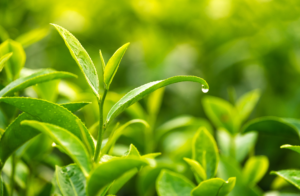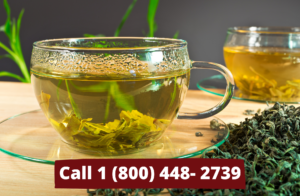From Leaf to Cup: Unveiling the Journey of the Tea in Your Cup
The tea that’s steeped full of flavor and aroma takes a fascinating journey from plant to mug. The health benefits of drinking tea and the soothing flavors make it a favorite beverage worldwide.
All teas – black, green, oolong, white and others – start off generally the same. After tea leaves are plucked, they are sorted by type and size, then prepared for processing.
Processing
It’s the processing that determines the type of tea that makes it into your cup. The most common processing method comprises four stages:

- Withering: Here, leaves are laid out in troughs of wire mesh to dry, reducing the moisture content to 60-70%. Air passes over the leaves for 12-17 hours.
- Rolling: Either by hand or using large machines, this process twists and turns the leaves, breaking them into thin pieces.
- Oxidation: It’s this stage that determines a tea’s color, taste and intensity. The leaves are again put on troughs or tables where they rest minutes at a temperature of 78 F. Enzymes in the leaves react with the air and gradually change in color from green to beige to brown. The longer they oxidize, the more intense the flavor becomes.
- Firing: In this final stage, leaves run through hot-air dryers that reduce the moisture content further to about 3%, leaving them ready to be packed.
Green vs. Black Tea
Let’s take a deeper dive into how green and black teas are made.
Green teas undergo minimal oxidizing. They are also steamed or pan-roasted to develop flavors. Japanese green teas use hot air in a humid environment to prevent oxidation. Chinese teas are roasted in pans in large ovens or open fires, also to prevent oxidation.
They’re then rolled into twigs, pellets or balls, which further prevents oxidizing, preserves the green color and builds earthy flavors. They are then dried immediately and sorted by shape and size.
Black tea, by contrast, is the most oxidized of the tea types, which results in a darker color and bolder taste.
In the rolling phase, they release moisture and enzymes. The orthodox process rolls the leaves on hard surfaces or bamboo mats. The CTC (cut-tear-curl) method puts the leaves in large drums with sharp teeth; this method is preferred for tea used in tea bags.
Oxidation is where the full flavor comes to bear. The leaves are placed in a cool and humid space where they turn deep brown.
For many tea drinkers, caffeine-free tea is preferred. To reduce the amount of caffeine, the tea is either soaked in methylene chloride or ethyl acetate, or pressure cooked with carbon dioxide. Another method soaks leaves in water, from which the caffeine molecules are removed before reinstating the water.
At BostonbeaN, we are passionate about delivering the finest and most diverse beverage experiences. We offer a wide range of tea and coffee varieties to give everyone a brewed beverage they will savor and enjoy. Experience your favorite beverages with BostonbeaN coffee and tea service.



